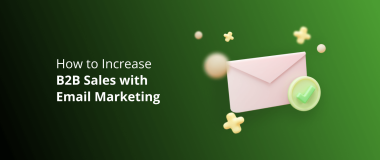If you want to stay strong at your online business, it’s always important to design email pitch that will not get deleted. Email is still an exceedingly powerful apparatus for achieving an intended interest group. However, each sent email contends with a great deal of inbox mess.
According to BuzzStream,
Tips to Make Your Email Pitches Powerful
When you pitch to writers and bloggers, you confront large portions of indistinguishable difficulties from email advertisers. You need your pitches to emerge, be perused and at last produce an activity. It is simple for those messages to go unnoticed. Here are a few tips that can help you:
Related: Become a Web Content Management Pro: WCM Handbook
Tip #1: Keep It Basic
This applies to the content of your email, as well as its appearance/format, as well. When you give a mind-boggling measure of data, pictures and different diversions, you make grinding for perusers. Concentrate on making it simple to skim your message with a basic format, short pieces of content and slugs where conceivable. Try not to drive away beneficiaries when they open it.
Tip #2: Hook Them with an Attractive Headline
Is it true that you are facilitating an occasion in their general vicinity? Elevating an item pertinent to their readership? Catch consideration by promptly getting out something important. Be that as it may, be brief—it’s simple for titles to get cut off. Go for under 50 characters and start with your essential watchwords. At last, ensure it mirrors what’s inside the email. Else, you hazard annoying the openers.
Tip #3: Be Relevant
One of the best parts of email is that you can customize your substance. Very frequently, we hear writers gripe about getting insignificant pitches. Separate yourself by setting aside the opportunity to peruse their articles. Utilize apparatuses like Cision’s Media Database to pick up bits of knowledge into particular columnists’ pitching inclinations, and when they’re wanting to cover certain themes. When you decide their interests, you can tailor your pitches to answer the question, “Why would it be advisable for me to mind?”
Tip #4: Come With the Desired Result
What do you need the beneficiaries to do? Meet your customer? Include your item in their blessing guides? List your occasion? The clearer you can be with your suggestion to take action, the more probable you are to get the result. Give a particular demand, and make it simple for beneficiaries to catch up with you.
Tip #4: Add Value to Your Pitch
Try not to be a moocher, be an asset as well! More often than not PR individuals are asking for something and not giving extra an incentive back. Help with the stories that you are requesting that the journalists make. That may mean having extra assets other than simply your customer or giving references to writers stories.
The more you can help them, the more they can consider you to be an accomplice and assets. I would say, on the off chance that you will help assemble the pieces and make the story balanced, writers react much better and you can build up an honest to goodness organization with the media.
Mistakes That You Should Avoid
If you do not want to get your email deleted, then try to avoid the followings:
-
Neglecting to Replace Template Details
On the off chance that you work from a template when you email leads, you will most likely have things like INSERT NAME HERE and scattered all through. Neglecting to supplant those placeholders with real, precise data is 100% going to promise you don’t get an answer.
-
Making It Too Much Long
Tune in, we’re all occupied, and no one has time to peruse through a five-section email from an outsider. Particularly, if it’s one of those about me writes. Come to the heart of the matter. Do not make it unnecessarily long.
-
Making It All About You
On the off chance that you quickly dispatch into a harangue concerning why you are so marvelous and you are the person for the occupation, the beneficiary of your email will do one of two things:
- They will delete your email without trying to react, or
- They will slam their head against the wall, then erase your email without reacting.
You have to concentrate on how you can help them. You can, in any case, allude to yourself, obviously — you have to give them some sign you are up to the errand, after all. However, you have to do it with regards to the customer.
-
Forgetting Call to Action
Without a call to action, your email campaign is useless. Incorporate the CTA toward the end of the email, else they’ll overlook it as they keep reading.
What Should You Offer?
An elite is important to numerous writers; almost half let us know that they incline toward being the first to cover a story. A headline that plainly shows this open door is probably going to earn consideration from distributors. In the event that you’ve done some exploration or are sharing new data, you’ll likewise have leeway: 85% additionally need to see crude information in your pitch since this permits them to frame their own story on the subject. Rather than a pre-composed, canned offer. You can demonstrate both of these perspectives in your headline by including keywords like “selective” and “raw information.”
In this present reality where form and style columnists are pummeled with email, it is difficult to get through the clamor. Be that as it may, PR masters who set aside the opportunity to compose a bona fide pitch with a compelling title have a vastly improved possibility of getting their customer’s story or even content noticed.
What Should Be the Length of Your Email Pitch?
Shorter titles are better, as indicated by a greater part of our respondents. 55% let us know that they favor titles in the vicinity of six and 10 words. While just shy of 20% said they incline toward less than six words, such a meager length may put your title in danger of being excessively obscure. A decent dependable guideline is to utilize close to 10 words, striking a harmony amongst curtness and giving a particular depiction of your pitch.
Bottom Line:
Try not to leave your pitch insane and be prepared to answer questions. Have the pitch prepared to go as though the correspondent will need to run it quickly. The less basis a columnist has the accomplish for your story the more probable they are to utilize it.
Think past exactly what you or your customer needs to state, and think about how it fits into a bigger pattern. Informing a journalist concerning your customer’s new item/administration will be a much harder offer than conversing with them about another pattern that your customer is a part of.





